Andyʼs working notes
About these notesCOGS 101B - Lecture 12 - Attention
Another role of attention is to enhance relevant information.
One way to investigate this is to explore how pre-cuing affects processing of stimuli. In this simple experiment, a cue affects reaction time to a target’s appearance: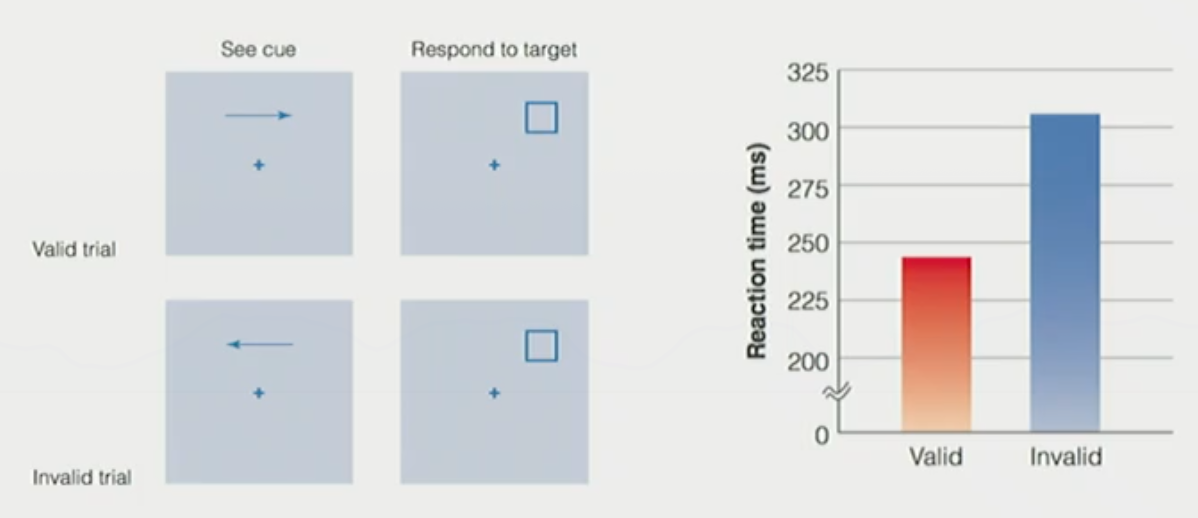
More interestingly, information processing seems to be enhanced for the whole object where attention is directed. This is called same object advantage. In this experiment (Egly et al, 1994), reaction time at point B is enhanced relative to C when attention is on A (i.e. on the same object):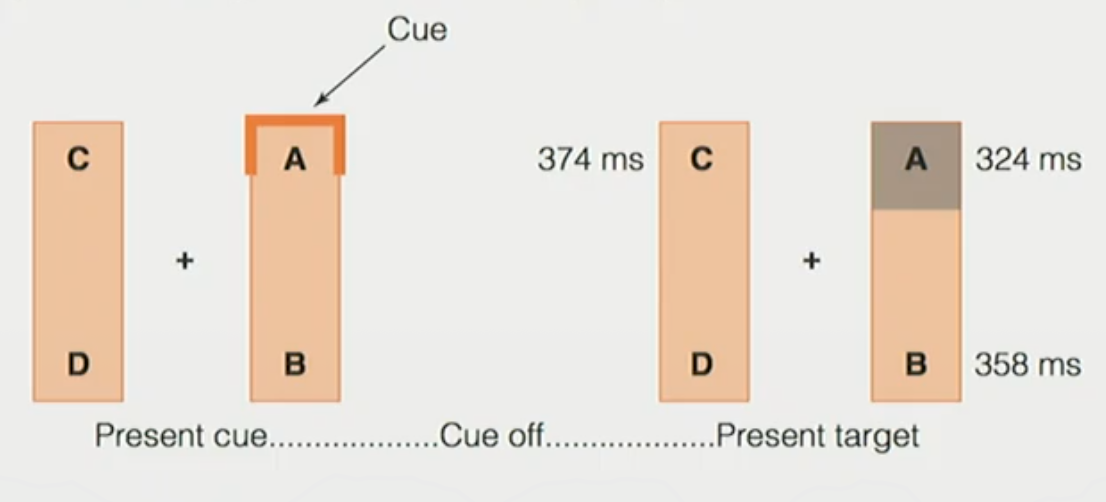
Attention also increases our ability to process subtle details: people can detect smaller gaps in a shape when a cue guides their attention to the correct position. In fact, Carrasco et al (2004) found that attention makes people perceive stimuli as having higher contrast.
Building on that, since it’s previously been established that people typically find higher-contrast faces more attractive, Stoermer found that cued attention actually produces higher ratings of attractiveness.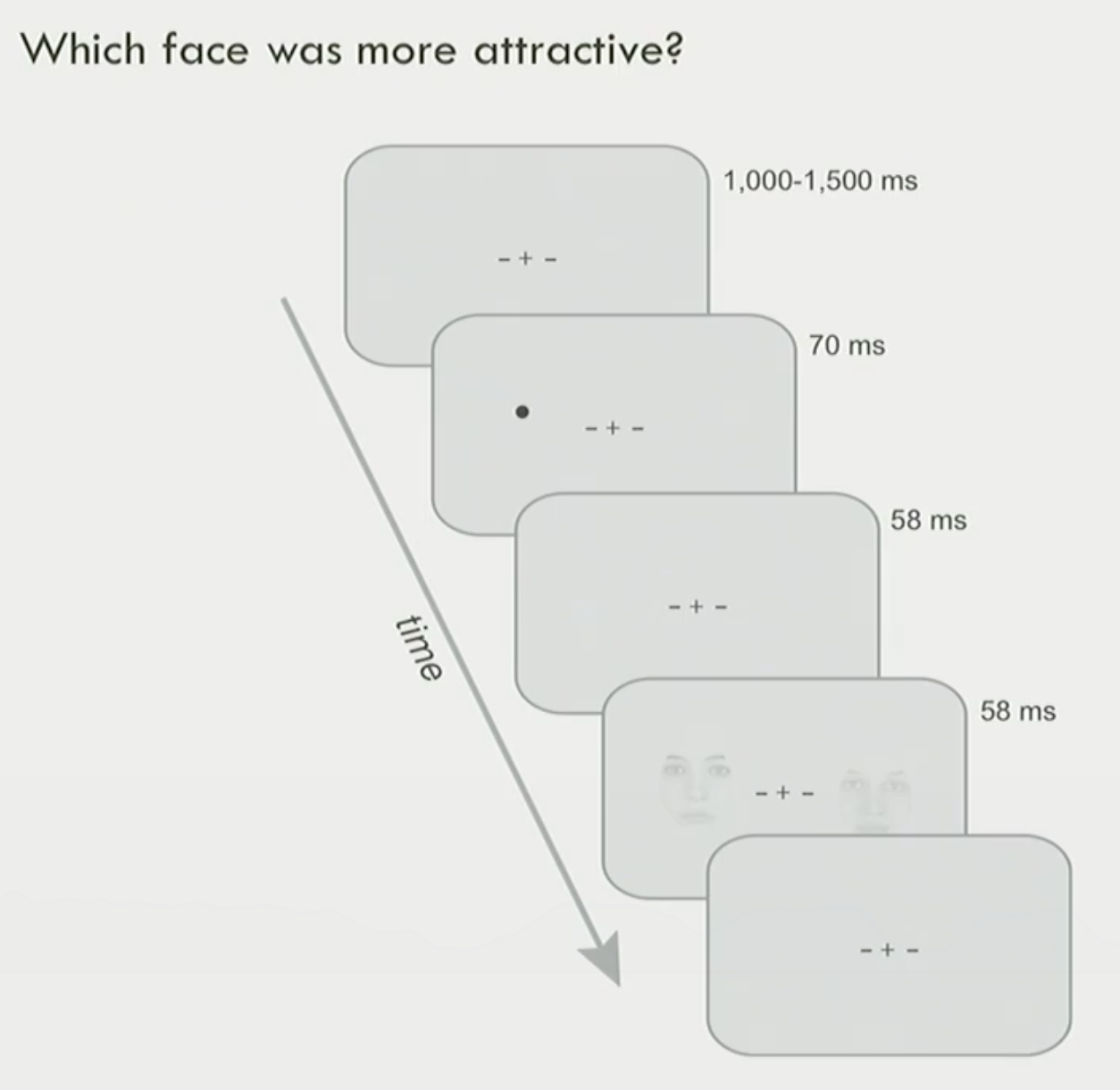
One common metaphor for attention is that it’s like a {spotlight beam} which {improves processing} when directed toward a particular location or object.
Selective attention produces {change blindness}: you may have difficulty {detecting changes in a scene} when {you aren’t looking for them}.
{Inattentional blindness}: people {fail to see} {what they are not expecting} (classic example: gorilla study)
Q. What is the attentional blink?
A. After attending to one stimulus, there may be some refractory period in which we’re less able to switch to another.
Q. Procedure for experiment COGS101b introduces to demonstrate attentional blink?
A. Numbers (and one or two letters) flash in sequence. Letters are separated by a variable count of numbers.
Q. What are participants asked to recall in the COGS101b experiment introducing attentional blink?
A. The letters which appear in the number/letter sequence.
Q. Visualize the graph of results for the COGS101b experiment introducing attentional blink.
A. (V-shaped response for recognizing second letter)
Q. In the COGS101b experiment introducing attentional blink, people were least likely to recognize the second letter when one / a few / many numbers intervened.
A. A few.
Q. What is meant by “contralateral” in neuroscience?
A. Pertaining to the side of the body / visual field opposite the brain region in question.
Perceiving a coherent world
{Feature binding}: process by which {visual features are combined} to create {perception of a coherent object}
Q. Name 3+ examples of features relevant to feature binding
A. Color, motion, location, shape, depth
The {illusory conjunctions} experiment by Treisman & Gelade (1980) is meant to demonstrate that without {attention} we can’t {bind features together}.
In their experiment, subjects would be asked to report the numbers displayed in a quick image.
Then they’d be asked which of these letter/color combos they saw: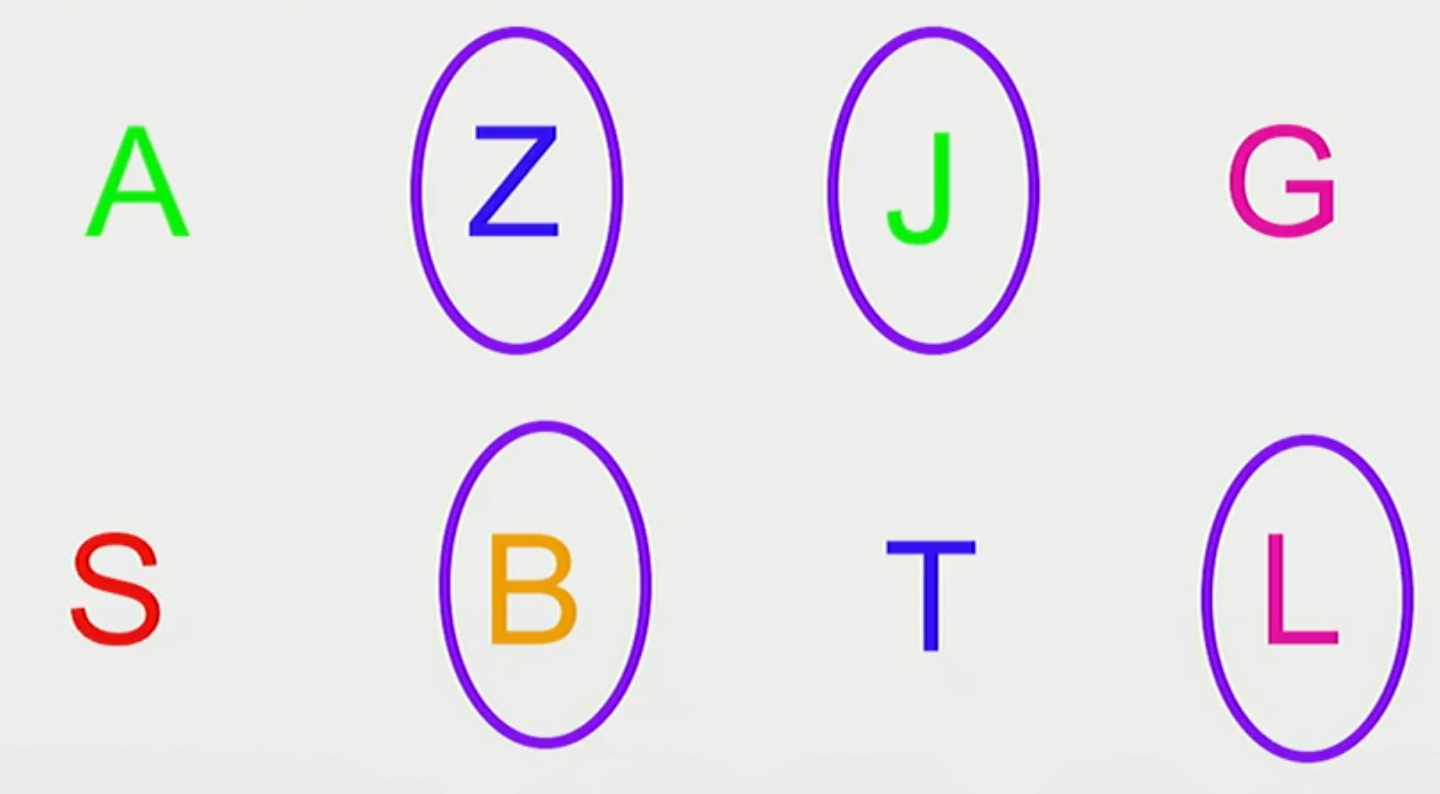
And they’d often incorrectly report seeing the blue Z and green J. They took this to imply that without attention, we perceive separate stimuli (presence of green, presence of Z) but fail to correctly bind these features together.
Another implication of feature binding requiring attention is that searches which {require feature binding} won’t be able to {operate over the whole visual field at once}.
This is demonstrated by another experiment: find the red vertical bar.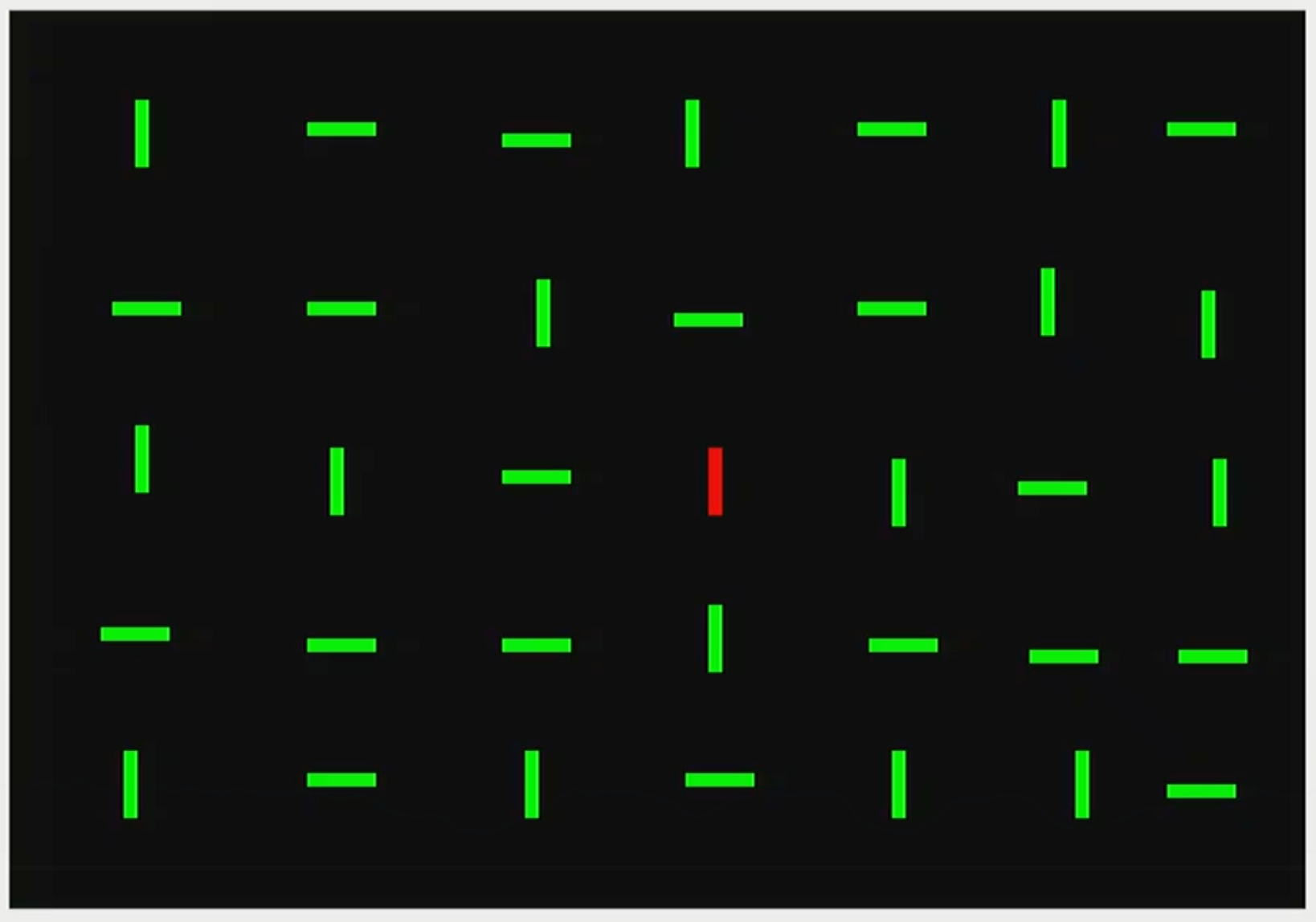
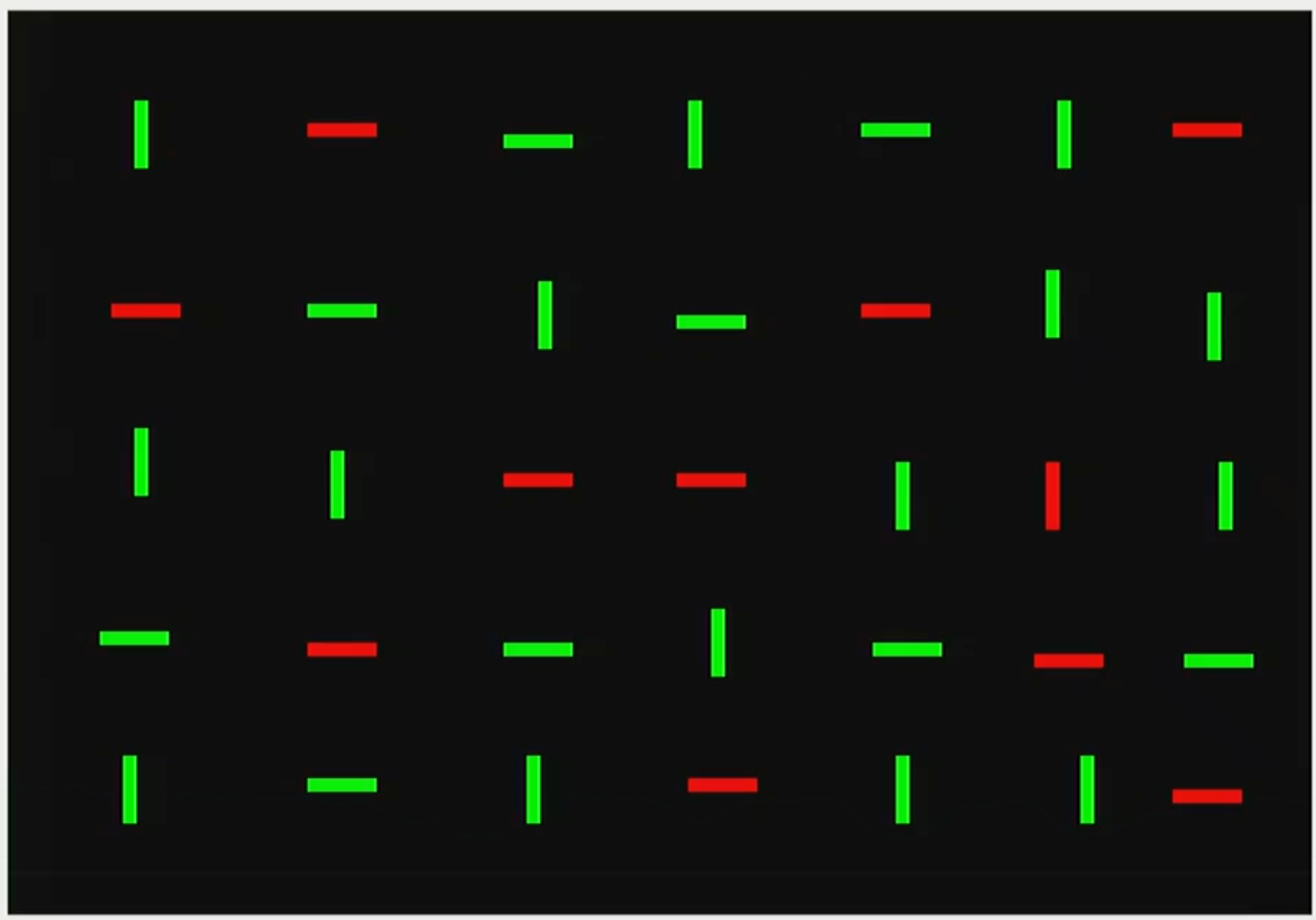
In the first example, you don’t have to perform feature binding to answer the prompt, since there’s only one vertical bar. But in the second—which requires feature binding—it feels like you have to perform a linear search to find the correct object.